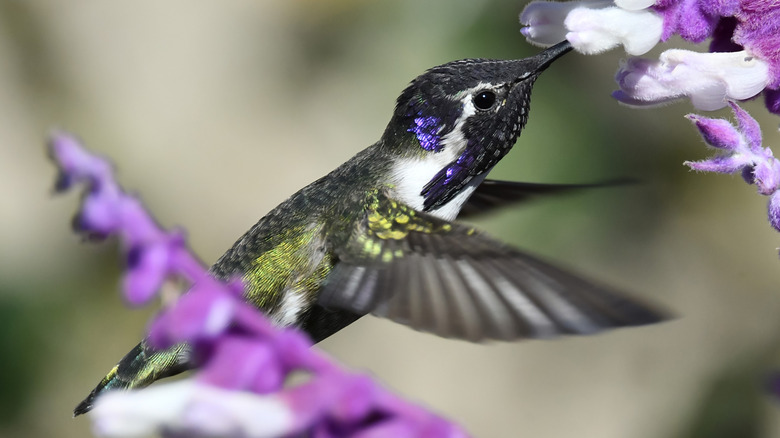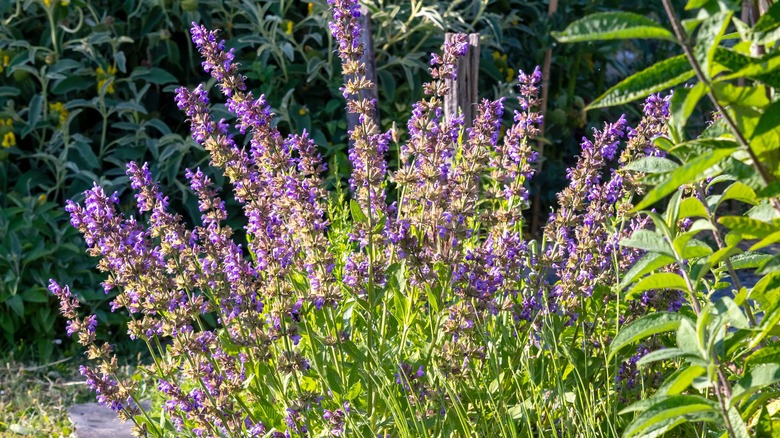Attract Hummingbirds With Companion Plants For Their Beloved Sage
We may receive a commission on purchases made from links.
There's nothing quite like the enchanted feeling hummingbirds, with their impossible grace and speed, add to your garden. Hummingbirds live across much of the United States, but there are steps you can take to attract them to your garden. To bring hummingbird visitors, the best strategy is to have a reliable food source. You could consider making a DIY hummingbird feeder or purchasing this gorgeous, blown-glass Muse Garden Hummingbird Feeder or this more basic Perky-Pet pinched-waist glass hummingbird feeder from Amazon. In addition, the plants you choose for your garden can make the difference between a hummingbird-filled or hummingbird-free yard.
For instance, hummingbirds' beloved sage (Salvia spathacea) attracts them because their tubular flowers are perfectly shaped for their long beaks and tongues. Hummingbirds are also attracted to bright, vividly colored flowers, so adding the color red to your garden can help attract hummingbirds. You can start by planting sage seeds, such as these generic ones available on Amazon, and then carefully choosing the rest of the plants to fill your garden to get the most out of your space.
Consider combining sage with additional understory plants that attract hummingbirds, such as yerba buena (Clinopodium douglasii) or snowberry (Symphoricarpos albus), and then add welcome shade with trees and shrubs. By adding sage's companion plants that are also visited by hummingbirds, you'll keep them visiting your garden again and again.
Designing a hummingbird garden
To design a garden that's perfect for hummingbirds, first consider their insatiable desire for food. They need energy to keep their wings beating — after all, it can't be easy flapping their wings up to 4,000 times a minute! For companion plants to sage, consider other understory plants known to attract hummingbirds, such as coral bells (Heuchera cultivars), an evergreen plant that grows well in most regions of the United States. Its red and pink bell-shaped flowers attract hummingbirds, butterflies, and bees. Another great choice is yerba buena, which grows well in shady areas, and if your soil is dry, snowberry will grow well.
The versatile canyon sunflower (Venegasia carpesioides) is almost always blooming, does well in most soil types, and attracts pollinators such as birds and bees. Creating an understory layer of hummingbird-friendly plants will help make sure they fly your way.
After you've planned your ground-level plants, it's time to think about building in some shade with taller plants that also complement sage. Ocean spray (Holodiscus discolor) is a larger flowering plant that grows up to 15 feet tall and provides hummingbirds food through its cascading clumps of white flowers. Adding flowering trees such as the western redbud (Cercis occidentalis) has the benefit of adding shade and providing more food for hummingbirds. You can also consider planting these common shade trees, which can even help lower your AC bill in the summer. Then you'll have a nicely shaded garden that is a hummingbird's dream come true.

